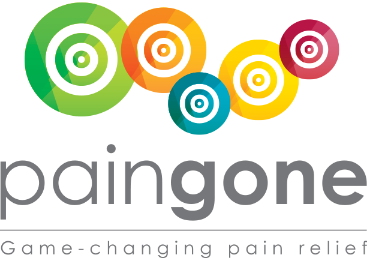
Aug 6, 2021
Paingone
Digital Treatment Options for Joint Pain/Osteoarthritis Show Greater Effectiveness Than Traditional Care Approach
In a recent issue of JAMA Network Open, research outlines the effectiveness of treating joint pain through a digital healthcare approach. A digital approach not only improves pain relief outcomes but could reduce the cost to patients and insurers and minimize the need for joint replacement surgeries.
The study by the University of Nottingham followed the results of the Joint Academy’s digital treatment protocol for chronic knee pain caused by osteoarthritis. Compared to patients receiving traditional treatment, patients using digital treatment saw a significantly higher reduction in pain levels. While patients using traditional pain relief methods as outlined in self-care instructions experienced only a six percent reduction in pain, patients accessing and using digital treatment guidance saw a decrease in pain of over 40 percent.
“We already knew that digital first-line treatment substantially improves symptoms of osteoarthritis at a significantly lower cost than face-to-face care. This study firmly establishes how effective digital treatment actually is relative to traditional self-management care,” explained Leif Dahlberg, Chief Medical Officer at Joint Academy and Senior Professor in Orthopedics.
The patients in the digital treatment group were partnered with physical therapists through a smartphone application that provided daily exercises and educational materials. Traditional patients saw their doctors when needed and practices self-management of their joint pain.
FDA Approves New Treatment for Diabetic Neuropathy Pain
A new spinal cord stimulation (SCS) treatment for the chronic pain of diabetic neuropathy has been approved by the Food and Drug Administration. The Senza Omnia SCS system uses mild electrical impulses to stimulate inhibitory neurons located in the dorsal horn region of the spinal cord. The approval covers treatment for chronic neuropathic pain in the lower limbs, which can be excruciating in patients with diabetic neuropathy.
Medical device company Nevro developed the Senza Omnia with three new features. First, a novel programming system assists physicians in providing a variety of waveforms across the SCS (spinal cord stimulation) treatment spectrum. Second, the company developed a new patient remote that is easier for individuals to operate. Finally, the system has an improved, upgradeable pulse generator that is implanted in the body. Physicians can later add additional frequencies to fine-tune pain relief.
Muscle Relaxers Don’t Alleviate Long-Term Low Back Pain
Researchers at the University of New South Wales’ School of Health Science in Sydney, Australia, revealed that a long-term study indicates muscles relaxers have only a limited positive effect on lower back pain. In the United States, millions of people take muscle relaxers to reduce lower back pain, but it seems the impact isn’t lasting.
While patients taking muscle relaxants did experience short-term pain relief, the effectiveness doesn’t last over the long term. According to James McAuley, the study author, “on average, the effect is probably too small to be important, and most patients wouldn’t be able to feel any difference in their pain compared to taking a placebo, or sugar pill. There is also an increased risk of side effects.”
The study evaluated over 30 previous investigations covering more than 6,500 patients with lower back pain and covered 18 different types of prescription muscle relaxers. The study focused on two different time frames. In the initial two weeks of a medical regimen, there were indications of low-level pain relief from muscle relaxants. During weeks three through 13, there was a consistent lack of evidence that there was any pain relief at all.
McAuley noted that the results indicated that using alternative forms of pain relief that didn’t focus on prescription medications or surgery was imperative. He also noted that remaining active was an essential component in relieving lower back pain.
The Entourage Effect of Cannabis for Pain Relief
Cannabis Sativa, a particular strain of marijuana, is used by many for acute and chronic pain relief. Now researchers at the University of Arizona Health Sciences Comprehensive Pain and Addiction Center indicate that the effect of cannabis may be increased through the “entourage effect,” a phenomenon where the pain-relieving effect of the cannabis plant as a whole is greater than the effect of using any of the individual parts of the plant.

The new research found evidence that Cannabis terpenes, which are responsible for the flavor and scent of the plant, can be effective as pain-relieving agents. The combination of terpenes, often used in essential oils and CBD compounds, with other parts of the plant, could result in fewer side effects and lower dosages of cannabinoids.
John Streicher, Ph.D., associate professor of pharmacology at the College of Medicine, Tucson, explained, “We’re interested in the concept of the entourage effect, with the idea being that maybe we can boost the modest pain-relieving efficacy of THC and not boost the psychoactive side effects, so you could have a better therapeutic. It was unexpected, in a way,” said Dr. Streicher. “It was our initial hypothesis, but we didn’t necessarily expect terpenes, these simple compounds that are found in multiple plants, to produce cannabinoid-like effects.”
The research aims to develop ways to use terpenes combined with cannabinoids or opioids for pain relief at lower dosages and with fewer side effects without the psychoactive effects of higher levels of THC.
This Week’s Pain Fact: According to Physician’s Weekly and the AJEM Journal, black patients are 22% less likely to find effective relief for chronic pain. They are also 40% less likely to be prescribed medication for acute pain and 34% less likely to obtain opioid prescriptions than white patients. The reasons for the discrepancies may include cultural distinctions in how pain is perceived, language barriers, and prejudice.
Is Paingone helping your patients and your practice?
Tell us your success story.
A robust retail strategy is essential to growing your practice.
You only have so many hours a week available for appointments. The fastest way to increase your bottom line is to incorporate profitable products that generate repeat business and build your reputation as a medical professional. That’s where Paingone comes in.
Contact us below to learn more about our products, wholesale pricing and how Paingone can benefit your practice.

